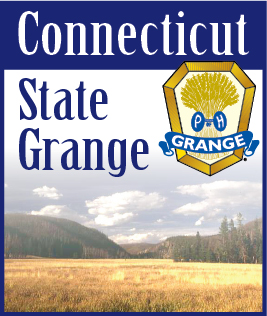| APRIL 23, 2011 -- The Sonoma Valley Grange in California is all about food, but these days many of the members know more about cooking it than growing it.
Their old-fashioned bi-monthly pancake breakfasts come with fresh-squeezed orange juice, veggie frittatas made from local eggs, free-range chicken, duck and turkey sausages, and pancakes made with fresh ground flour.
The twice-yearly flea market offers collectibles and “fabulous homemade food,” and the annual Spring Chicken Fling features an organic locavore menu.
As with many other Granges, this one lost members during the late Twentieth Century, but now it is being reinvigorated by fans of local, organic and sustainably farmed food.
That includes its president, Jim�Callahan, who might seem an odd choice to be spearheading a fraternal farm organization. He’s a sculptor, not a farmer, and was in 2000 named the City of Sonoma’s Treasure Artist.
“As Wendell Berry wrote, ‘Eating is an agricultural act,’” Callahan explains. “Whether or not we’re farmers, we’re all engaged in this agricultural act.”
The National Grange got its start in 1867 as a place for farm families to organize politically and economically. With its help, there were able to break the grip of railroad monopolies on transportation costs, establish cost-saving cooperatives and bring mail delivery and electrification to rural areas.
For decades, whole communities grew up around Grange Halls that helped provide jobs, education, entertainment and even shelter.
When the Sonoma Valley Grange received its charter in 1924, the region was largely agricultural. It thrived until World War II, with 200 active members. But as the number of family farms declined, so did the Grange.
Two years ago, it had only 48 members. Today its roster is 115 and growing.
“After World War II. farming became much more mechanized,” Callahan said. “Small family farmers were forced out, and the Grange began to lose its relevance.”
Callahan is grateful for the members who kept it going through the tough years until interest in family farms and the organic and sustainable movements brought it back to life.
“People are looking for like-minded others who share their interests,” Callahan says, “and they’re coming to the Grange again.”
They find an organization in the midst of re-shaping itself to serve the entire community, not just farmers, in old and new ways.
The old Rosenthal building that has housed the Grange since 1936 is getting a facelift, too, with new windows and awnings and a paint job. Sonoma County Energy Watch and the Energy Alliance Association also are helping make the building more energy-efficient.
Underscoring these efforts is the redevelopment of the Highway 12 corridor on which it sits, with new sidewalks and street lights through Boyes Hot Springs and Agua Caliente.
“There seems to be a general groundswell of enthusiasm about building a stronger community there now,” Callahan said, “and the Grange can be the community meeting place.”
The building is already used for public meetings and as a polling place, but Grange members also gather there for many of the same purposes as the original founders.
“We continue to tackle political and philosophical issues,” Callahan said. “We’ve got a group working on different aspects of the Farm Bill. We’re sending letters to legislators about responsible use of antibiotics and pesticides. And we’re pushing organic farming issues.” |
